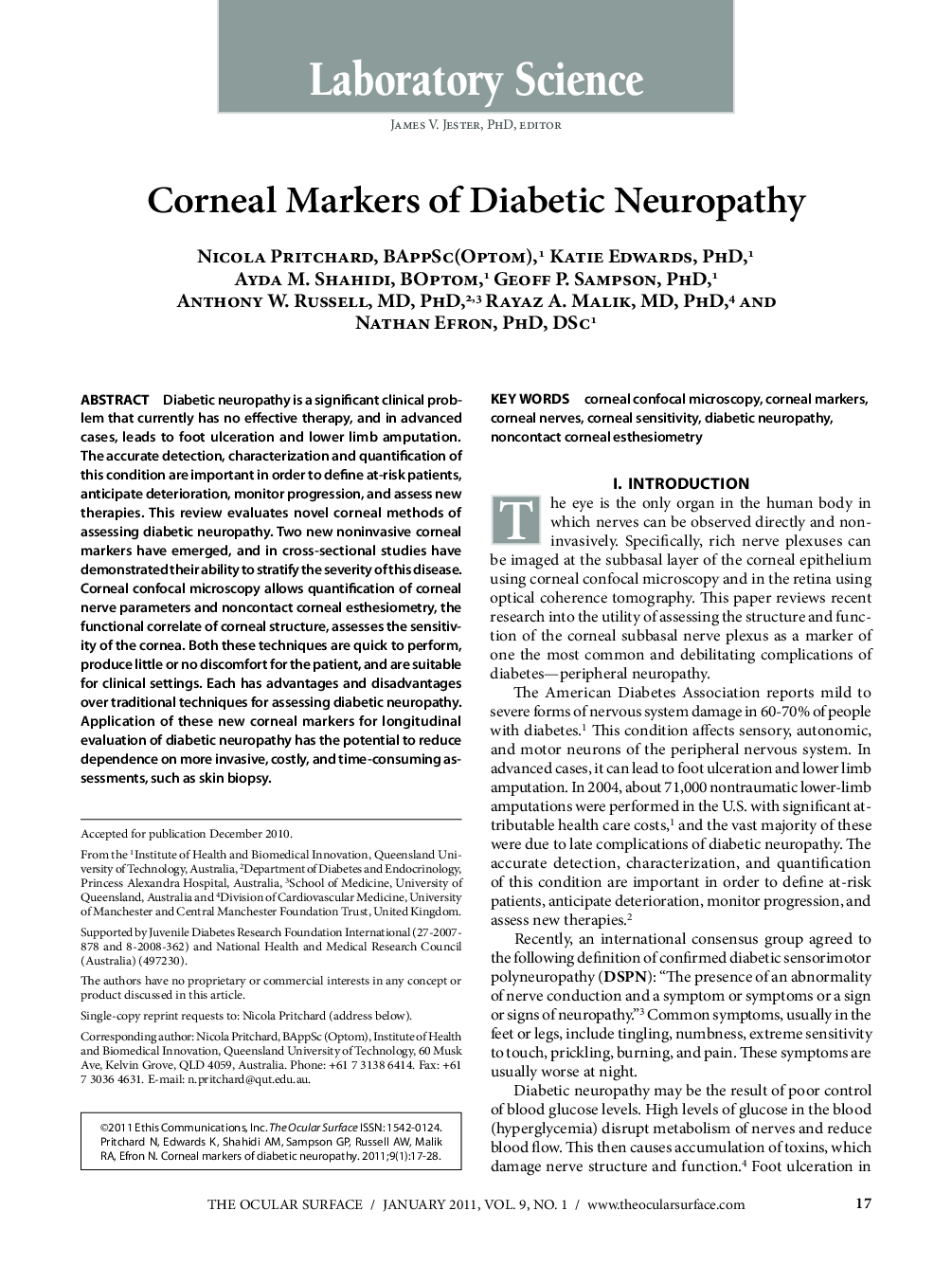| Article ID | Journal | Published Year | Pages | File Type |
|---|---|---|---|---|
| 2695537 | The Ocular Surface | 2011 | 12 Pages |
Diabetic neuropathy is a significant clinical problem that currently has no effective therapy, and in advanced cases, leads to foot ulceration and lower limb amputation. The accurate detection, characterization and quantification of this condition are important in order to define at-risk patients, anticipate deterioration, monitor progression, and assess new therapies. This review evaluates novel corneal methods of assessing diabetic neuropathy. Two new noninvasive corneal markers have emerged, and in cross-sectional studies have demonstrated their ability to stratify the severity of this disease. Corneal confocal microscopy allows quantification of corneal nerve parameters and noncontact corneal esthesiometry, the functional correlate of corneal structure, assesses the sensitivity of the cornea. Both these techniques are quick to perform, produce little or no discomfort for the patient, and are suitable for clinical settings. Each has advantages and disadvantages over traditional techniques for assessing diabetic neuropathy. Application of these new corneal markers for longitudinal evaluation of diabetic neuropathy has the potential to reduce dependence on more invasive, costly, and time-consuming assessments, such as skin biopsy.
